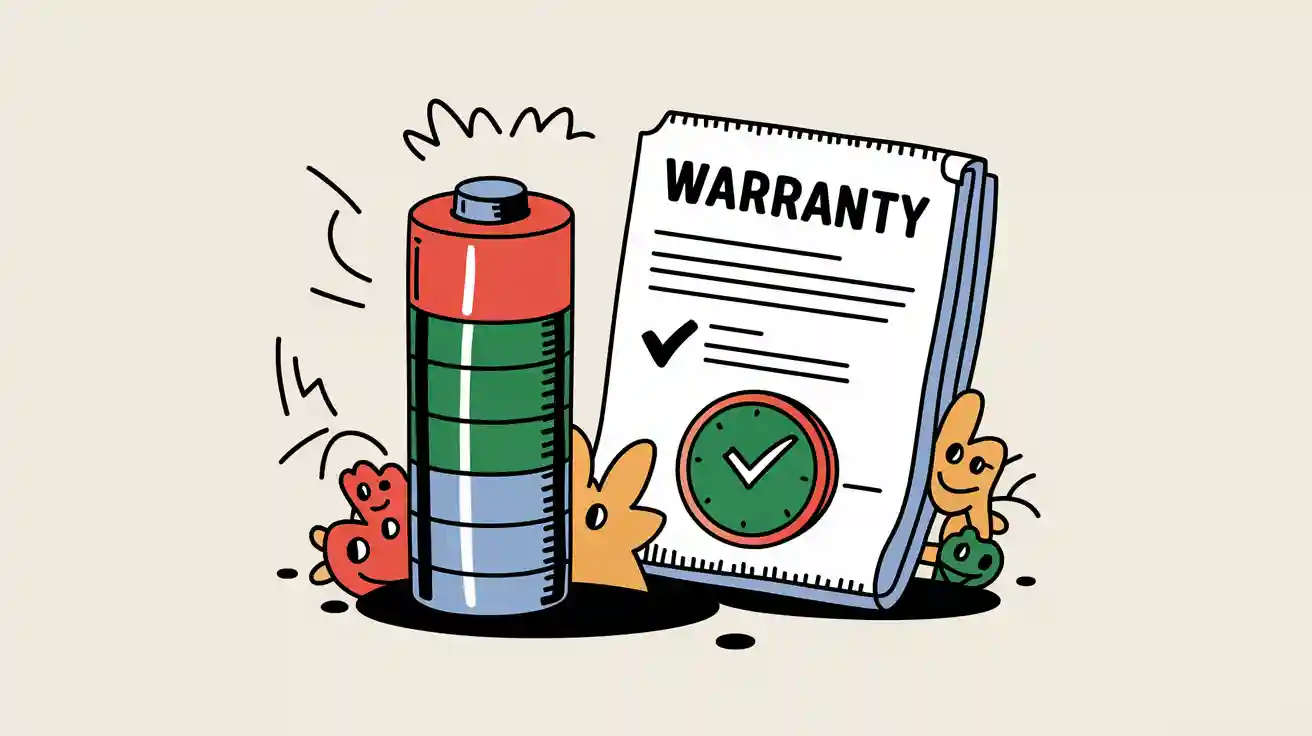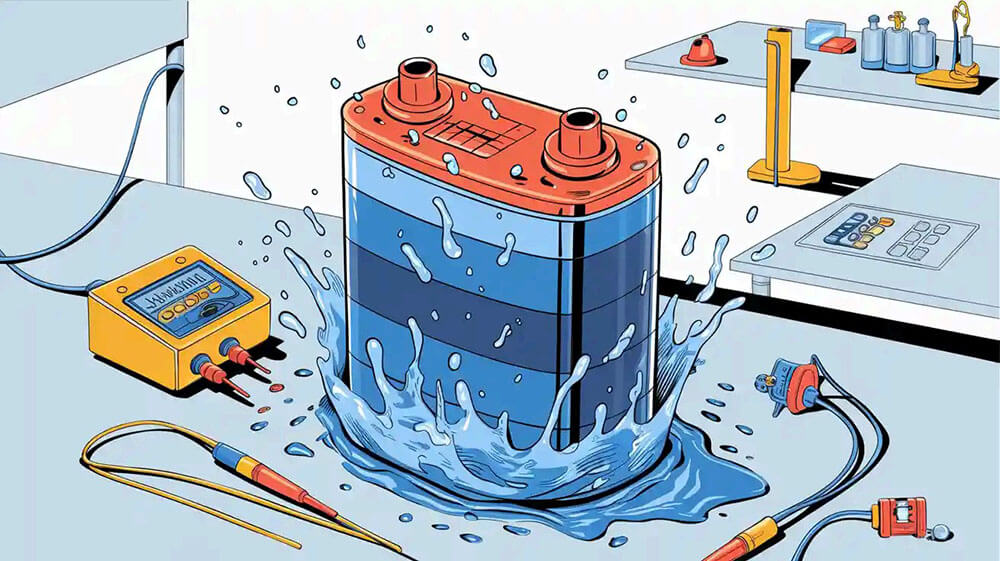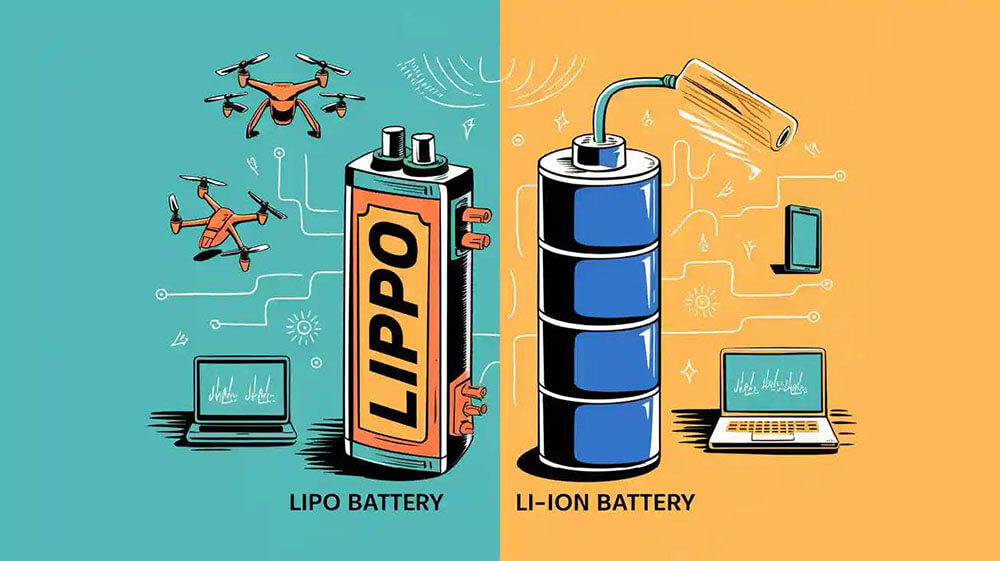Contents

When you purchase a battery, understanding the difference between Battery Warranty vs Battery Lifespan is crucial. A battery warranty serves as the manufacturer’s promise to repair or provide a replacement within a specific period. For lithium batteries, this ensures reliability for industries like robotics and infrastructure.
In contrast, a battery’s lifespan refers to how long it remains functional before performance declines. For example:
Lithium-ion batteries last 500-2,000 cycles.
LiFePO4 batteries operate 2,000-5,000 cycles.
Lithium-polymer batteries last 500-800 cycles.
The key difference lies in Battery Warranty vs Battery Lifespan, with the warranty being a commitment from the manufacturer, while lifespan reflects the real-world usability of the battery.
Explore custom battery solutions at Large Power to find options tailored to your operational needs.
Key Takeaways
A battery warranty means the maker will fix or replace it if it stops working within a set time. This helps protect your money and keeps the battery dependable.
Battery lifespan is how long a battery works well before it wears out. Things like charging, heat, and care can change how long it lasts.
To get the most from the warranty and lifespan, use the battery correctly. Charge it as suggested and keep it in a cool, dry spot.

Part 1: What is a Battery Warranty?
1.1 Definition and Purpose of a Battery Warranty
A battery warranty is a formal assurance provided by manufacturers, guaranteeing the repair or replacement of a battery if it fails to meet specific performance standards within a defined period. This promise ensures that you, as a buyer, can trust the product’s reliability. For industries relying on lithium-ion batteries, such as robotics or infrastructure, warranties play a critical role in minimizing operational risks. They provide peace of mind by covering potential defects or unexpected failures.
The primary purpose of a warranty is to protect your investment. It reflects the manufacturer’s confidence in their product’s quality and durability. For example, an EV battery warranty ensures that electric car batteries maintain a certain level of performance over time, reducing concerns about degradation or unexpected battery replacement costs.
1.2 What is Typically Covered Under Industrial Battery Warranties?
Industrial battery warranties often cover defects in materials or workmanship. They may also include guarantees on performance metrics, such as maintaining a specific capacity level over a set number of cycles. For instance, hybrid car battery warranties might specify that the battery will retain 70% of its original capacity after 8 years or 100,000 miles.
However, warranties usually exclude damage caused by improper use, accidents, or unauthorized modifications. Understanding these exclusions is crucial to avoid unexpected expenses. For businesses using lithium-ion or LiFePO4 batteries, adhering to proper maintenance practices can help you maximize warranty benefits.
1.3 Common Warranty Durations and Terms for Lithium Battery Packs
The duration and terms of warranties vary depending on the battery type and application. Most manufacturers of lithium battery packs offer warranties ranging from 1 to 5 years. For example:
Solar battery warranties typically last 5 years.
Manufacturers often guarantee that the battery will retain 60% to 80% of its original capacity after 3 years.
Some warranties specify performance based on energy throughput, calculated as one full charge-discharge cycle per day.
These terms ensure that you can rely on the battery’s performance for a significant portion of its lifespan. For electric car batteries, warranties often align with the vehicle’s expected usage, providing additional reassurance for long-term investments.
For businesses seeking tailored battery solutions, exploring custom options can help align warranties with specific operational needs. Learn more about custom battery solutions at Large Power.

Part 2: What is Battery Lifespan?
2.1 Definition and Factors That Affect Battery Lifespan
Battery lifespan refers to the period during which a battery remains functional and delivers reliable performance before its capacity declines significantly. For lithium-ion batteries, lifespan is typically measured in years or charge-discharge cycles. Understanding the factors that influence battery degradation can help you optimize usage and extend its life.
Several key factors affect battery lifespan:
Charge and discharge cycle count: Frequent cycling accelerates capacity loss.
Charge and discharge rate: High rates can strain the battery, reducing its lifespan.
Temperature: Elevated temperatures speed up chemical reactions, leading to faster degradation.
Storage conditions: Batteries stored in cool, dry environments last longer.
Internal resistance characteristics: Increased resistance generates heat, which impacts longevity.
Overcharging and over-discharging: Both can damage the battery and pose safety risks.
Mechanical stress: Physical impacts can harm internal structures, shortening lifespan.
By managing these factors, you can minimize battery degradation and maximize its usability. For industries like robotics, infrastructure, and consumer electronics, understanding these variables is essential for maintaining operational efficiency.
2.2 How to Estimate the Lifespan of Lithium Battery Packs
Estimating the lifespan of lithium battery packs involves analyzing their state of health (SOH) and remaining useful life (RUL). These metrics provide insights into battery performance and predict when degradation will render the battery ineffective. Advanced methods, such as deep learning and Gaussian process regression, are increasingly used to improve accuracy in lifespan predictions.
Key metrics for estimating battery life include:
State of Health (SOH): Indicates the battery’s current capacity compared to its original capacity.
Remaining Useful Life (RUL): Predicts the number of cycles or years the battery can continue to operate effectively.
For lithium-ion batteries, lifespan varies based on chemistry and usage. For example, LiFePO4 batteries offer longer cycles (2,000–5,000) compared to LMO batteries (300–700). Proper maintenance and monitoring can extend battery life, ensuring consistent performance for industrial applications.
If you need tailored solutions for your operational needs, consider consulting with experts at Large Power.

Part 3: Key Differences Between Battery Warranty vs Battery Lifespan
3.1 Coverage vs. Actual Performance
When comparing battery warranty and battery lifespan, the distinction between coverage and actual performance becomes evident. A warranty provides a manufacturer’s assurance that the battery will meet specific standards within a defined period. However, real-world performance often depends on how you use and maintain the battery.
While a longer warranty period often indicates higher confidence in the product, it does not guarantee that the battery will perform optimally throughout its lifespan. Factors like charge cycles, temperature, and usage patterns can influence battery performance beyond the warranty’s scope.
3.2 Manufacturer Responsibility vs. User Responsibility
Understanding the division of responsibility between manufacturers and users is crucial for maximizing both warranty benefits and battery lifespan. Manufacturers typically cover defects in materials and workmanship. They also ensure that the battery meets specific performance metrics during the warranty period.
However, as a user, you play a significant role in maintaining the battery’s health. To avoid voiding the warranty, you must:
Follow proper installation and storage guidelines.
Adhere to recommended charging and discharging rates.
Operate the battery within specified temperature limits.
Numerous industry reports emphasize that user behavior significantly impacts battery lifespan. For example:
“The aging pattern of electric vehicle batteries can vary widely amongst individual cases, depending on the user profile. Long-term tests reveal that how the battery is treated over its lifetime has a major impact on range and suitability for daily use.”
By aligning your usage with the manufacturer’s guidelines, you can extend the battery’s lifespan and reduce the likelihood of needing a replacement.
3.3 How Warranty and Lifespan Overlap or Differ in Practice
In practice, the overlap between warranty coverage and battery lifespan can be complex. While warranties are designed to cover a portion of the battery’s expected lifespan, they often come with strict conditions. For example:
A warranty might guarantee 70% capacity retention after 8 years, but only if the battery is used under ideal conditions.
Long-term warranties may lose value if operational guidelines are not followed.
The following table illustrates how warranty terms align with estimated battery lifespans in real-world scenarios:
While warranties provide a safety net, the actual lifespan of a battery often exceeds the warranty period. However, achieving this requires proper care and adherence to usage guidelines.
The relationship between warranty and lifespan is further complicated by varying supplier conditions. Some manufacturers offer generous warranties but impose strict operational requirements. As a buyer, you should evaluate both the warranty terms and the expected lifespan to make informed decisions.
For businesses seeking tailored solutions, consulting with experts can help align warranty coverage with operational needs. Explore custom battery solutions at Large Power.
Understanding the difference between a battery’s warranty and lifespan is essential for making informed purchasing decisions. Warranties provide a manufacturer’s guarantee, while lifespan reflects real-world performance. For example, knowing the remaining capacity of a lithium-ion battery can help you determine its resale value or long-term usability.
When evaluating options, consider both warranty terms and expected lifespan to align with your operational needs. Manufacturers often offer warranties covering 1 to 3 years, but proper maintenance is crucial to maximize both coverage and performance. For businesses, assessing these factors ensures reliability and cost-effectiveness.
To explore tailored solutions for your specific requirements, consult with experts at Large Power.
FAQ
1. What happens if a battery fails after the warranty period?
You will need to replace or repair the battery at your own expense. Manufacturers typically do not cover failures beyond the warranty period.
2. Can a battery’s lifespan exceed its warranty?
Yes, many batteries outlast their warranties. Proper maintenance and usage can help extend the lifespan beyond the coverage period.
3. How can you maximize a battery’s lifespan?
Store it in a cool, dry place. Avoid overcharging or deep discharging. Follow the manufacturer’s recommended usage guidelines for optimal performance. Explore custom battery solutions at Large Power.





